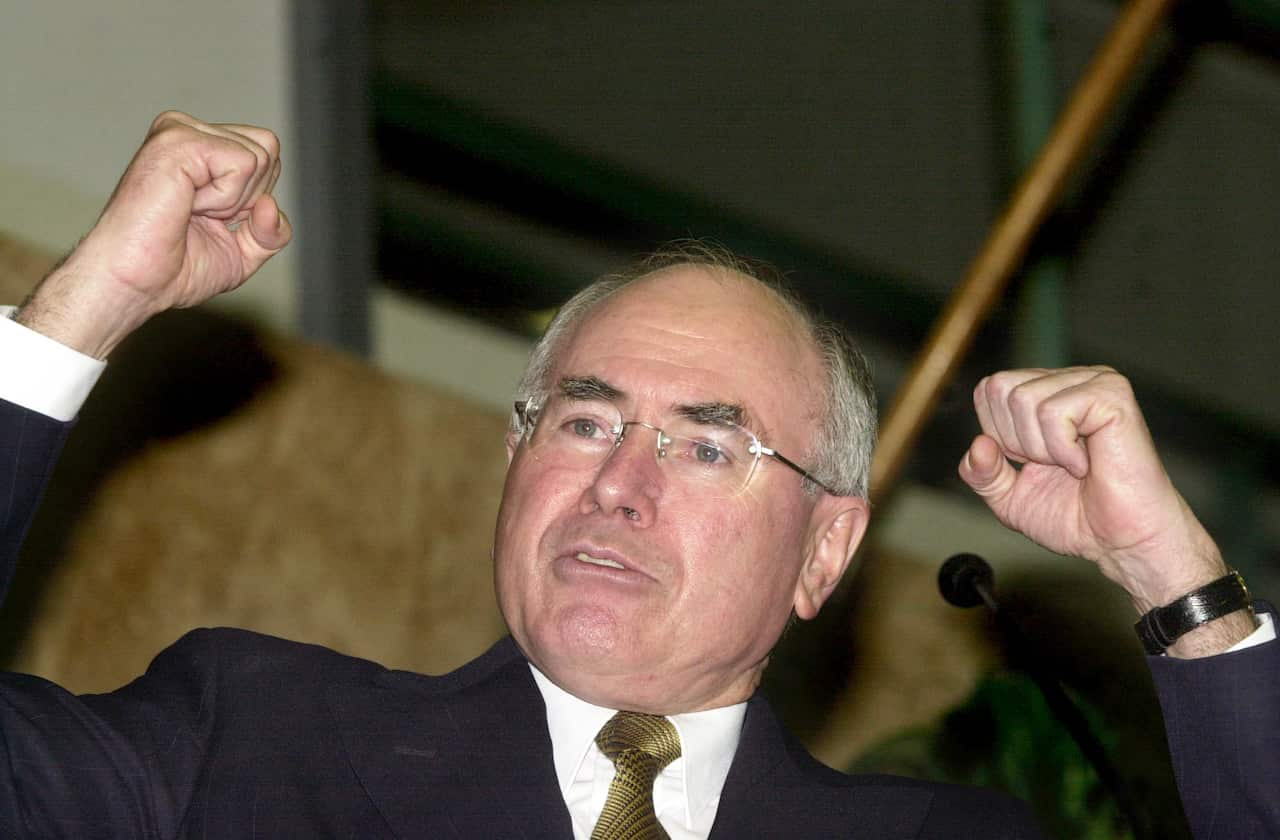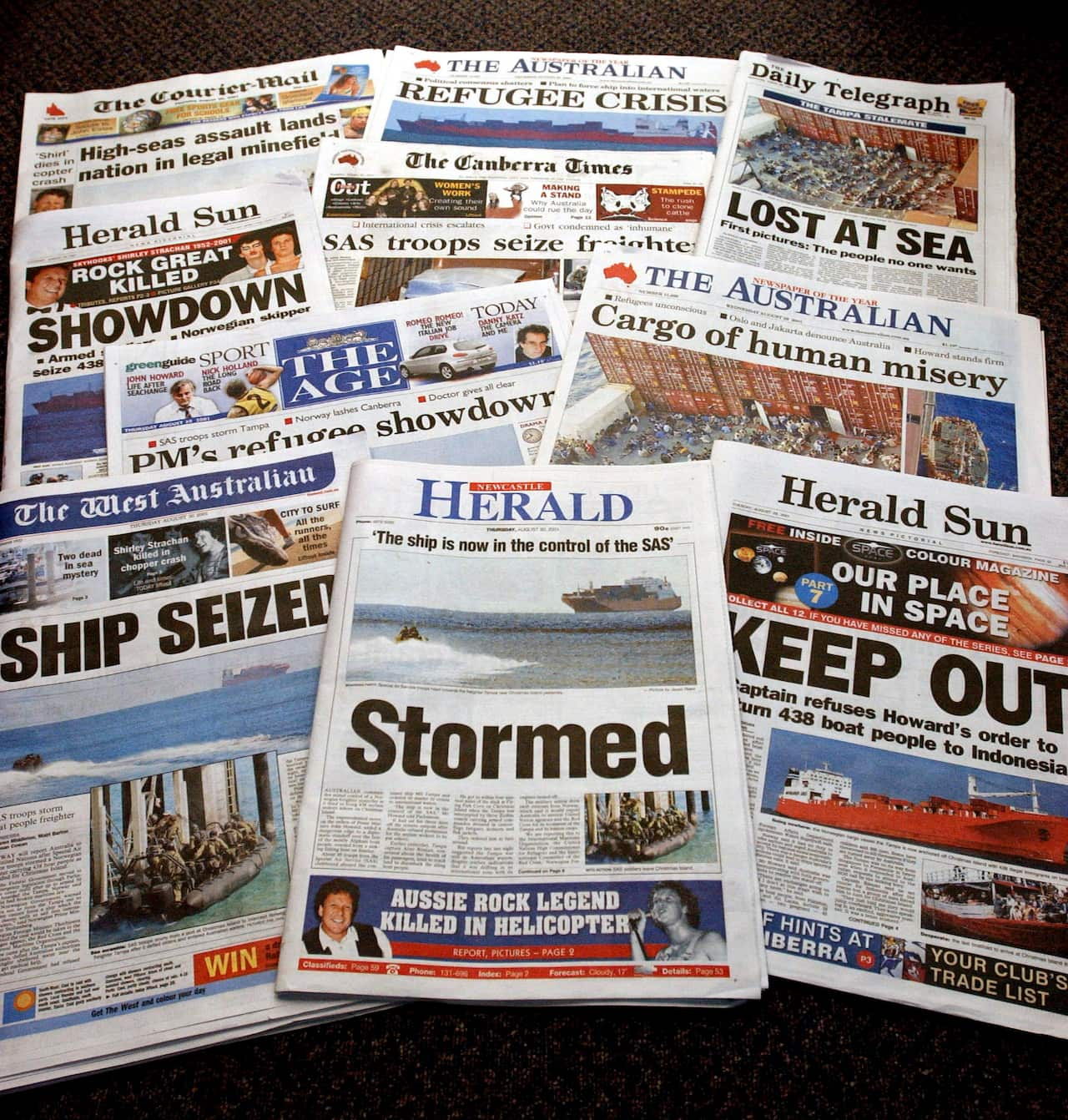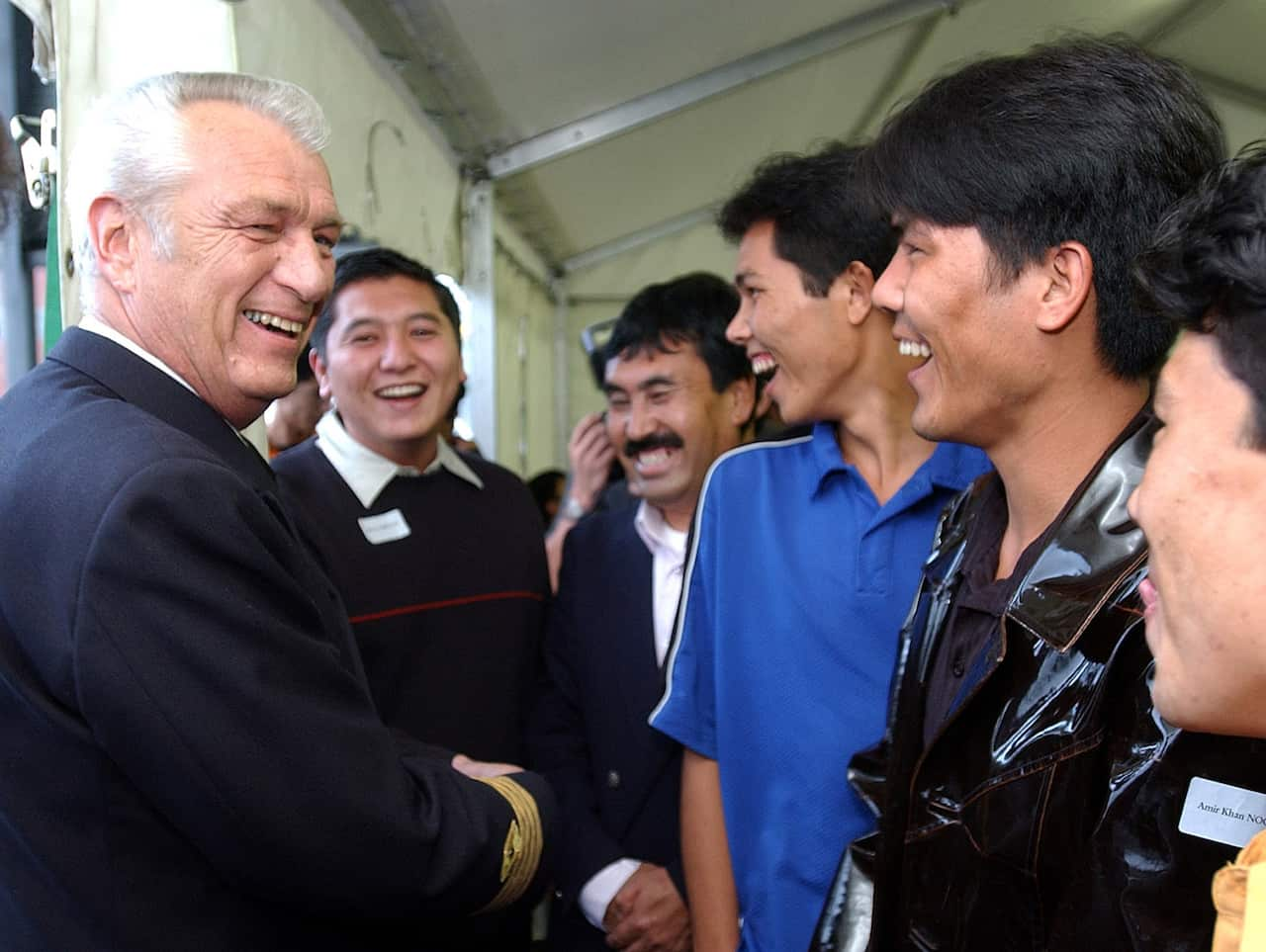Norwegian sailor Arne Rinnan figured he had done something that would probably make the news for a day or two.
He didn’t bank on sparking a diplomatic crisis, shaping an Australian election, or becoming a hero to some 400 asylum seekers in the process.
On August 26, 2001, Captain Rinnan was at the helm of the MV Tampa, a Norwegian freight ship sailing through the Indian Ocean to Singapore.
Just after midday the Tampa changed course. Australian maritime authorities had spotted a small boat with ‘HELP’ painted on the roof, and the Tampa was asked to check it out.  Around 5pm the Tampa reached the Palapa - a small Indonesian fishing boat dangerously overcrowded with more than 400 asylum seekers bound for Australia.
Around 5pm the Tampa reached the Palapa - a small Indonesian fishing boat dangerously overcrowded with more than 400 asylum seekers bound for Australia.

The Tampa rescued 433 mostly-Afghan asylum seekers from the Indonesian fishing boat, the Palapa. Source: AAP/Wallenius Wilhelmsen
The Palapa, falling to pieces after a violent storm the night before, was sinking.
Rinnan says he did what any responsible captain would do.  “It was not really a refugee question to start out with,” Rinnan, now 81 and almost 20 years retired, told SBS Dateline from his home in Norway.
“It was not really a refugee question to start out with,” Rinnan, now 81 and almost 20 years retired, told SBS Dateline from his home in Norway.

Arne Rinnan was the captain of the MV Tampa. The ship would be engulfed by a political crisis, that still impacts Australia today. Source: Reuters/Alamy.
“When people are in distress at sea you are supposed to give them help.”
Concerned for the health of the asylum seekers, who had two pregnant women among them, Rinnan directed the Tampa towards the nearest port on Christmas Island.
But the Coalition government, which was hardening its border policies in the face of a looming election, forbid the Tampa from entering Australian waters. “I believe it is in Australia’s national interest that we draw a line on what is increasingly becoming an uncontrollable number of illegal arrivals in this country,” then-Prime Minister John Howard said in a radio interview at the time.
“I believe it is in Australia’s national interest that we draw a line on what is increasingly becoming an uncontrollable number of illegal arrivals in this country,” then-Prime Minister John Howard said in a radio interview at the time.

Prime Minister John Howard rejoices in the glory of favourable opinion polls following the Tampa refugee crisis. Source: AAP
Officials demanded Rinnan and the Tampa leave Australian waters. Rinnan refused to do so.
"I was a little bit frustrated and I did not understand why they turned us around," Rinnan said.
"But, you know, we stayed outside in international waters until the situation was a little bit more clear."
In a fax sent to immigration officials on August 27, Rinnan said the situation on-board the Tampa was “critical”.
“If it is not addressed immediately people will die shortly.”
‘Close to certain death’
Abbas Nazari, now 27, was one of the 433 asylum seekers rescued by the Tampa.
As members of the Hazara ethnic minority, Abbas and his family had fled Afghanistan and the brutal Taliban regime of the time.
Their best shot at safety, Abbas said, was to pay people smugglers to take them from Indonesia to Australia.
Abbas paints a frightening picture of the desperation that soaked the Palapa. “Here we were in this open, endless ocean in a wooden rickety old fishing boat that was being battered around by waves,” he told SBS Dateline.
“Here we were in this open, endless ocean in a wooden rickety old fishing boat that was being battered around by waves,” he told SBS Dateline.

Abbas Nazari (right) with his brothers and father in the late 1990s, before the family would flee Afghanistan. Source: Supplied
“Pretty soon it began to fall apart right before our eyes. Some of the beams broke off, the decking came apart, there were holes in the side of the boat – we were taking on water from every direction.
“And I remember as a seven-year-old, that memory will always be with me, because that is the closest that we came to certain death.
On August 29, three days after rescuing the Palapa’s human cargo, the Tampa was still locked in a standoff with the federal government. Around 9am, with conditions on the boat deteriorating, Captain Rinnan sailed back into Australian waters – stopping about seven kilometres north of Christmas Island.
Around 9am, with conditions on the boat deteriorating, Captain Rinnan sailed back into Australian waters – stopping about seven kilometres north of Christmas Island.

Abbas says the conditions were dire on-board the ill-equipped Tampa. Source: WALLENIUS WILHELMSEN
The government’s response was swift and drastic. Within two hours , some 45 SAS soldiers had been sent to seize control of the Tampa - stopping the asylum seekers from setting foot in Australia.
The asylum seekers would spend another three days on the Tampa after it was boarded by the Australian soldiers.
“It was almost like a war zone,” Abbas recalled.
“You've got people that are injured, people that are in dire need of medical attention. You've got immense sea sickness and diarrhoea and every sort of illness and ailment.
“Many people, including myself, had really bad skin conditions from being sunburnt and from sleeping on damp wood for so long.
“We all had pus-filled sores and our skin was cracked and bleeding.”
‘We treated them appallingly’
The crisis ended on September 2, when other countries stepped forward to accept the Tampa refugees that Australia didn’t want.
Some, such as Abbas and his family, would be quickly settled in New Zealand.
Others would remain on Nauru while their claims for asylum in Australia were processed. Professor Harry Minas, one of Australia’s eminent psychiatrists, was on the federal government’s detention advisory board at the time of the Tampa crisis.
Professor Harry Minas, one of Australia’s eminent psychiatrists, was on the federal government’s detention advisory board at the time of the Tampa crisis.

Abbas has recently returned from a Fulbright scholarship in the United States. Source: Supplied
“The Tampa asylum seekers were treated appallingly,” he told SBS Dateline.
“They were kept on board for many days without any real support – that boat didn’t have the resources that it needed for more than 400 asylum seekers.
“When they were taken to offshore detention the government was receiving very clear advice about the mental health consequences of detention – and that was completely disregarded.”
He would later visit the Nauru offshore detention centre, where a handful of Tampa asylum seekers languished for three years.
“The situation on Nauru was horrendous, particularly in terms of the mental health of those who were there for a very long time,” Professor Minas said. Professor Minas believes the Tampa affair precipitated a fundamental and deeply concerning change in Australia’s attitude towards asylum seekers.
Professor Minas believes the Tampa affair precipitated a fundamental and deeply concerning change in Australia’s attitude towards asylum seekers.

Reporting from the time of the Tampa crisis. Source: AAP
“The legacy of the Tampa affair continues pretty much unabated.
“In all important respects, very little has changed. Decisions were made at that time about how Australia would deal with asylum seekers, and I think the situation now is not so different.
“I’m personally ashamed that our country treats asylum seekers in the way that it does.”
‘Life has to go on’
The MV Tampa is long gone – the ship was scrapped in 2013 – but the ripples from the Tampa affair are still felt today.
In the aftermath of the Tampa crisis, the Howard government implemented a harsh new set of policies called the Pacific Solution.
Among other measures, the Pacific Solution allowed asylum seekers to be detained and processed offshore, in newly-built detention centres on Manus Island and Nauru.
The Pacific Solution also stopped asylum seekers from applying for refugee status if they landed on offshore Australian territories such as Christmas, Cocos and Cartier islands.
Australia was condemned by many for the harshness of the Pacific Solution.
“Many bona fide refugees caught by the policy spent long periods in isolation, mental hardship and uncertainty - and prolonged separation from their families,” United Nations representative Richard Towle said in 2008.
But the measures, and John Howard’s handling of Australia’s borders in general, were popular with voters.
On November 10, less than three months after the Tampa crisis, Howard’s coalition government won its third term, increasing its vote by three per cent after consistently trailing in opinion polls.
Former Immigration Minister Philip Ruddock in 2013 said he had no regrets about his handling of the incident.
"If what you're arguing is that you simply give way to people who stand over you, as a country, you know, in my view, that has a far more deleterious downside, and you have to respond to it with a degree of determination," he said at the time.
"And that's exactly what we did." Captain Rinnan and the Tampa crew would be showered with accolades in the months and years following the incident.
Captain Rinnan and the Tampa crew would be showered with accolades in the months and years following the incident.

Captain Arne Rinnan in New Zealand with some of the asylum seekers rescued by the Tampa. Source: Ross Land/Getty Images
In 2002 the United Nations awarded the Tampa crew the Nansen Prize, citing their “personal courage” and “commitment to refugee protection”.
Rinnan would also become a hero to many of the refugees rescued by the Tampa.
“We remember those fatal hours, when our little wooden boat was shivering in the wind,” reads one of the many letters sent by Tampa survivors to Rinnan in the years following.
“You are a noble Viking with wisdom and humanity. My youngest son wants to put up a picture of you in his room, and my wife kisses your hands in gratitude.”
Rinnan sailed his last voyage in 2002 and, 20 years after the Tampa affair, plays down his involvement as nothing more than the actions of a responsible sailor.
“What we were doing was just to rescue people who were in distress at sea,” he said.
“I was not aware how this was blowing up, as you say. I just told my wife that evening that I might be in the news the next morning.
“I’m proud of it, but it’s nothing I’m going around talking about and thinking about. Life has to go on.”

